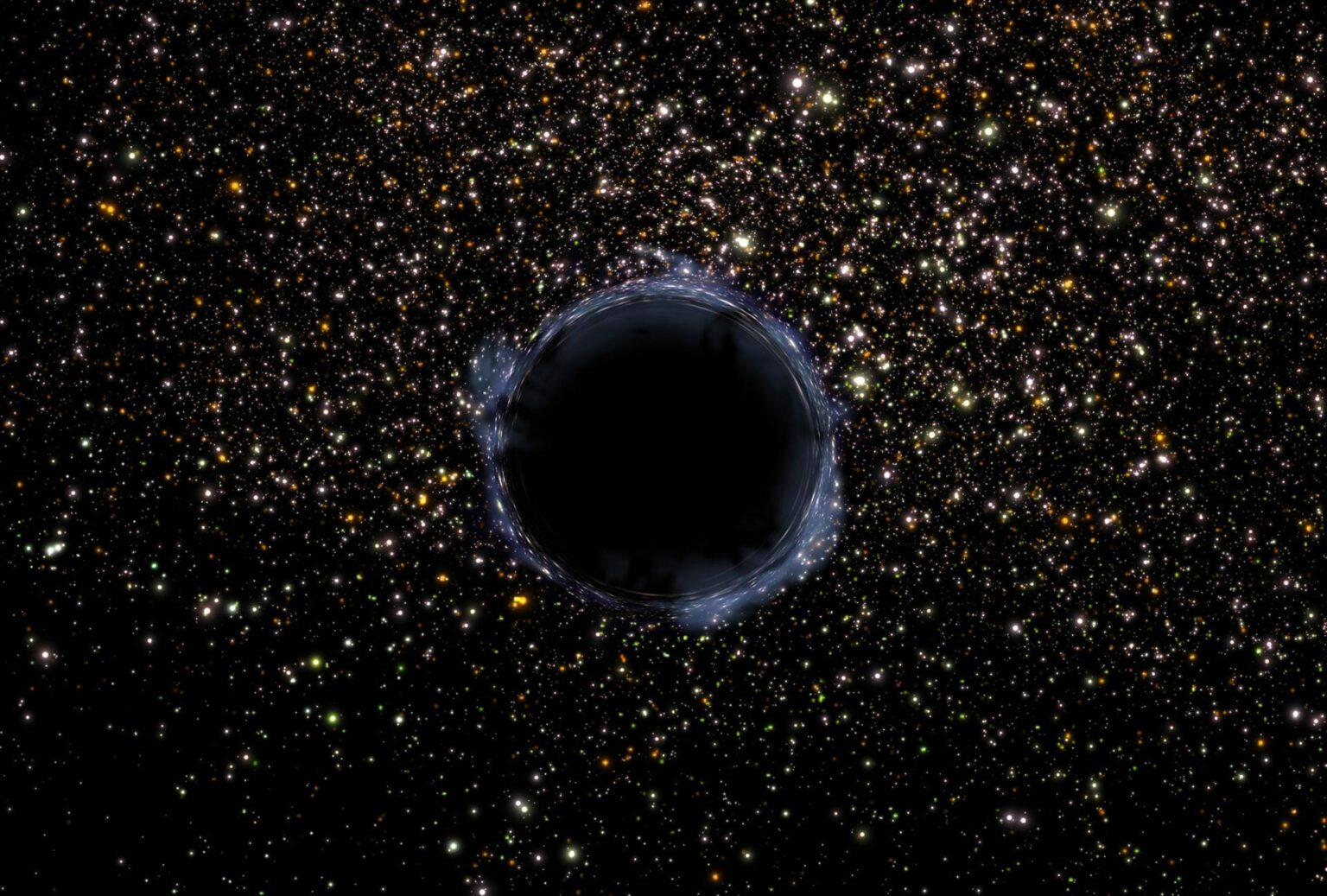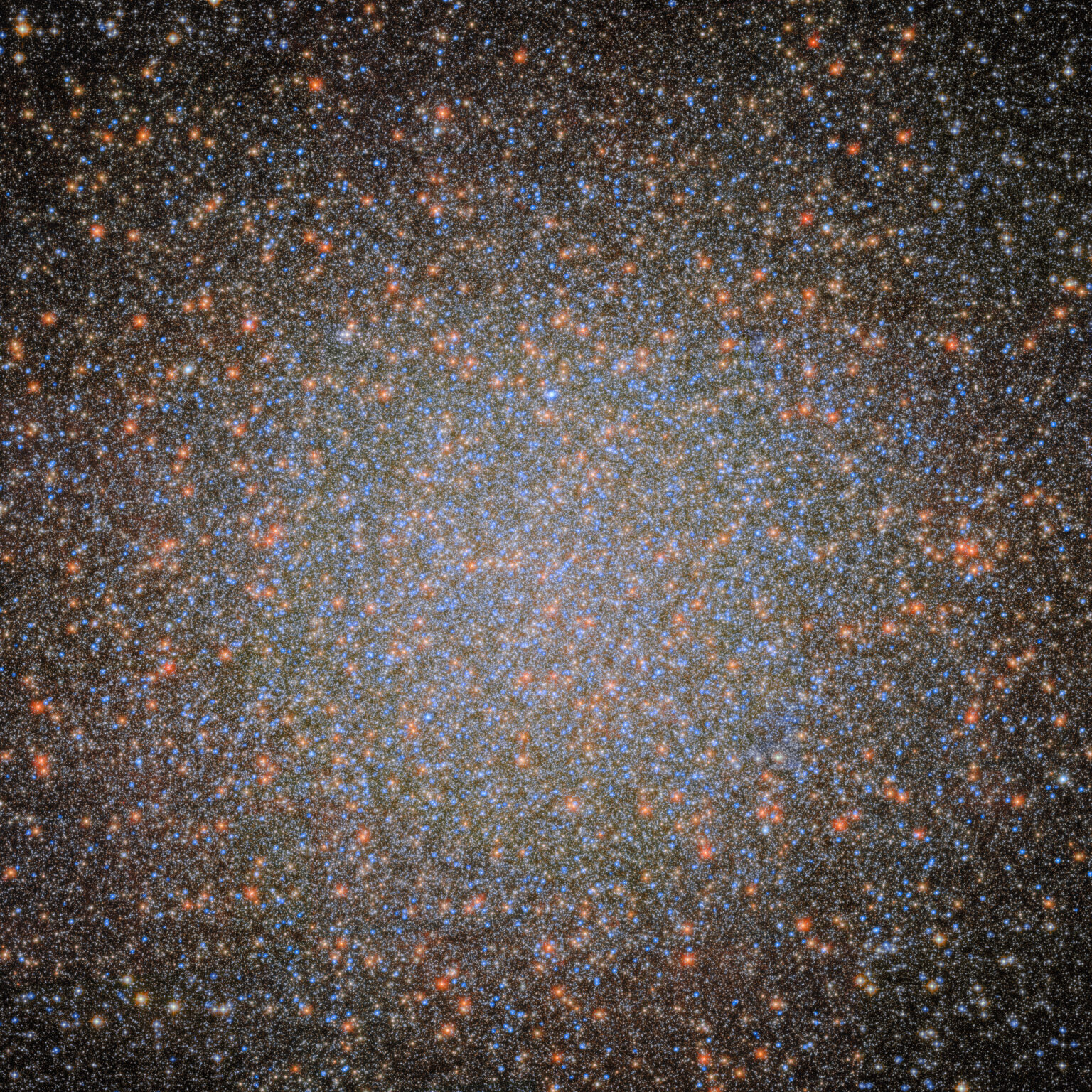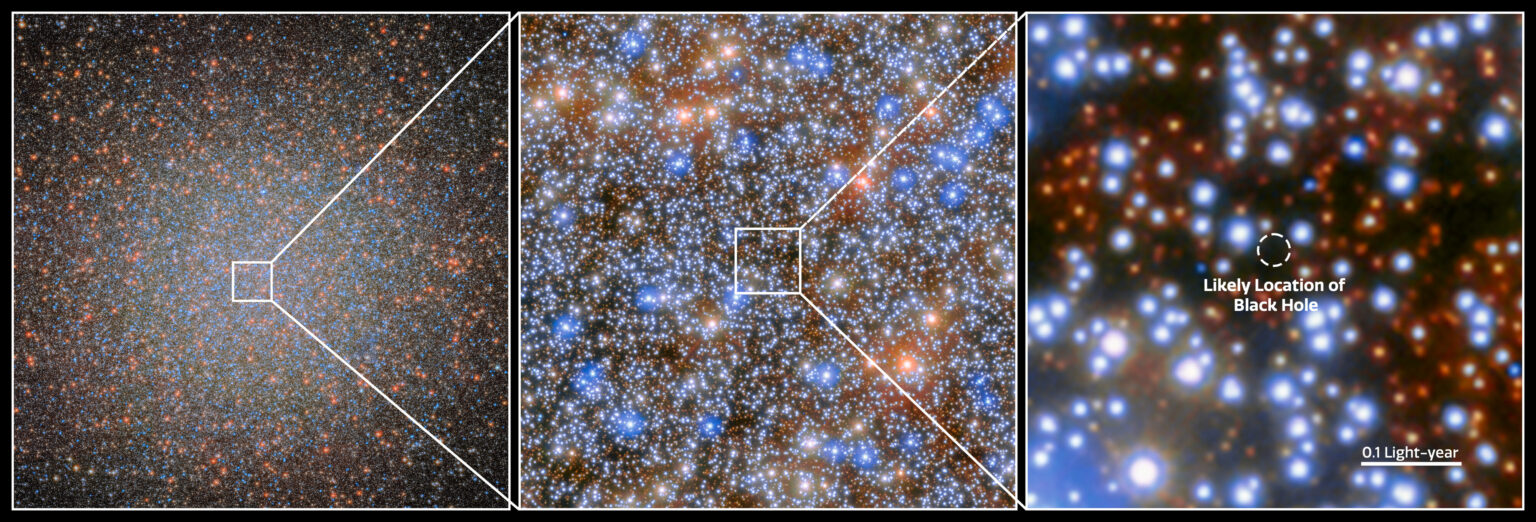The data collected by the Hubble Space Telescope has provided astronomers with convincing evidence of the existence of a medium-mass black hole. It is located in the center of the globular cluster Omega Centauri.
The missing link in the evolution of black holes
Supermassive black holes are located in the centers of most observed galaxies. The mass of these “monsters” can reach billions of solar masses. At the other end of the scale are stellar-mass black holes formed during the gravitational collapse of giant stars — they are several dozen times the mass of the Sun.

According to astronomers, this classification is not complete and there should also be an intermediate “middle class”. We are talking about black holes whose masses are much larger than stellar-mass black holes, but much smaller than those of supermassive black holes. It is assumed that they could become “embryos” that later grew to supermassive black holes in the centers of modern galaxies.
The problem is that to date, astronomers have only been able to identify a few potential candidates that fit the role of such black holes. But thanks to the Hubble telescope, scientists have the best evidence to date to confirm the existence of this “missing link.”
A black hole in the neighborhood
The discovery was made while studying the globular cluster Omega Centauri. It is located at a distance of 17,700 light-years from the Earth directly above the plane of the Milky Way. It is the largest globular cluster in our galaxy. Omega Centauri consists of 10 million gravitationally bound stars. The cluster can even be seen in the night sky with the naked eye.

Astronomers have long suspected that a black hole might be hiding in the heart of Omega Centauri. To confirm this, they analyzed more than 500 images of the cluster taken by the Hubble telescope over the past two decades. Most of them were intended for calibration of the telescope’s instruments, not for scientific use, but they turned out to be an ideal database for researchers.
During the analysis, astronomers discovered seven stars that should not be in a cluster. They are moving so fast that they should have already left it forever. The most likely explanation is that some massive object attracts these stars and keeps them near the center of Omega Centauri. Its mass is 8200 times that of the Sun, making it an ideal candidate for a medium-mass black hole.

Astronomers intend to continue research to more accurately determine the characteristics of the object in the center of Omega Centauri. This will involve the James Webb telescope and ground-based observatories. If the discovery is confirmed, it will be an important step towards understanding how black holes evolved in the Universe.
Based on materials from esahubble.org

